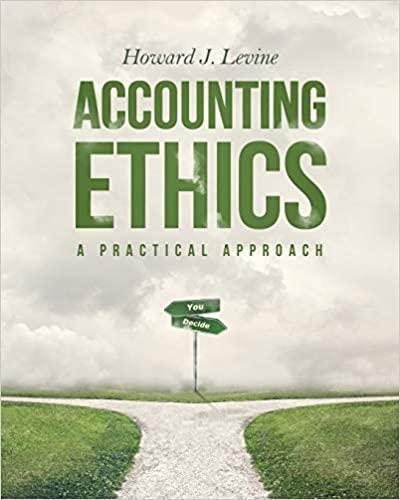Question
Target Corporation prepares its financial statements according to U.S. GAAP. Targets financial statements and disclosure notes for the year ended January 30, 2016, are available
Target Corporation prepares its financial statements according to U.S. GAAP. Targets financial statements and disclosure notes for the year ended January 30, 2016, are available in Connect. This material is also available under the Investor Relations link at the companys website (www.target.com). This case addresses a variety of characteristics of financial statements prepared using U.S. GAAP. Questions are grouped in parts according to various sections of the textbook.
PART E: LEASES, INCOME TAXES, AND PENSIONS
| E1. |
| Refer to Disclosure Note 22 following Targets financial statements. What is the amount reported for capital leases (shown as the present value of minimum lease payments)? What is the total of those lease payments? What accounts for the difference between the two amounts? |
| E2. |
| What is the total of the operating lease payments? New lease accounting guidance (discussed in Chapter 15) will require companies to report operating leases at present value, as well as capital leases (now called finance leases). If Target had used the new lease accounting guidance in its 2016 financial statements, what would be the amount reported for operating leases? Hint: Assume the payments after 2020 are to be paid evenly over a 16 years period and all payments are at the end of years indicated. Target indicates elsewhere in its financial statements that 6% is an appropriate discount rate for its leases. |
| E3. |
| In its Analysis of Financial Condition: New Accounting Pronouncements, Targets financial statements for the year ended January 30, 2016, the company indicates that: In February 2016, the FASB issued ASU No. 2016-02, Leases, to require organizations that lease assets to recognize the rights and obligations created by those leases on the balance sheet. The new standard is effective in 2019, with early adoption permitted. We are currently evaluating the effect the new standard will have on our financial statements. Refer to Note 22: Leases. When Target applies the new standard, what will be the primary effect on its financial statements? Explain. |
| E4. |
| From the income statement, determine the income tax expense for the most recent year. Tie that number to the second table in Disclosure Note 23, Provision for Income Taxes, and prepare a summary journal entry that records Targets tax expense from continuing operations for the year ended January 30, 2016. |
| E5. |
| Focusing on the third table in Disclosure Note 23, Net Deferred Tax Asset/(Liability), calculate the change in net deferred tax assets or liability. By how much did that amount change? To what extent did you account for that change in the journal entry you wrote for the first requirement of this case? List possible causes of any difference. |
| E6. |
| Targets Note 23 indicates that We have not recorded deferred taxes when earnings from foreign operations are considered to be indefinitely invested outside the U.S. These accumulated net earnings relate to certain ongoing operations and werePage B-4 $685 million at January 30, 2016 and $328 million at January 31, 2015. Are these amounts treated as temporary or permanent differences by Target? If Target decides to repatriate earnings in the future, what will be the effect on net income in the year of the repatriation? |
| E7. |
| What is Targets liability for unrecognized tax benefits as of January 30, 2016? If Target were to prevail in court and realize $50 million more in tax savings than it thought more likely than not to occur, what would be the effect on the liability for unrecognized tax benefits and on net income? |
| E8. |
| What were the changes in Targets Projected Benefits Obligation in the fiscal years ended January 30, 2016 (fiscal 2015) and January 31, 2015 (fiscal 2014), for its qualified pension plans? |
| E9. |
| What were the changes in Targets Pension Plan Assets in the fiscal years ended January 30, 2016 and January 31, 2015, for its qualified pension plans? |
| E10. | Were these pension plans overfunded or underfunded for the fiscal years ended January 30, 2016 and January 31, 2015? | |
| E11. | What were the components of Targets Pension Expense in the fiscal years ended January 30, 2016, January 31, 2015, and February 1, 2014? |
Step by Step Solution
There are 3 Steps involved in it
Step: 1

Get Instant Access to Expert-Tailored Solutions
See step-by-step solutions with expert insights and AI powered tools for academic success
Step: 2

Step: 3

Ace Your Homework with AI
Get the answers you need in no time with our AI-driven, step-by-step assistance
Get Started


